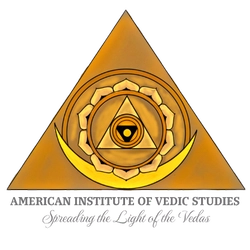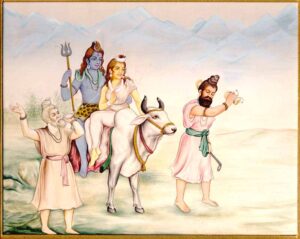The Vedas as the Pyramids of the Mind
The Vedas represent a monumental spiritual literature, by far the largest that remains from the ancient world, the many thousand profound symbolic mantras of India’s ancient Rishis.
We could therefore call the Vedas, ‘the pyramids of the ancient mind’. The Vedas are the oldest record of the great dharmic traditions of the East, with not only the Hindu but also Buddhist, Jain, Sikh and Zoroastrian traditions part of the same greater stream of spiritual striving. Apart from the Biblical tradition, this dharmic or Indic tradition is one of the two dominant streams of world spirituality that has endured throughout the centuries and remains vital to the present day, as the global popularity of Yoga, Vedanta and Buddhism clearly reveals.
If we look at the Vedic tradition, we see that it was based upon an ancient seer order that was extensive and sophisticated, comparable to the priestly orders of ancient Egypt or Babylonia. This priestly order was concerned not merely with rituals but also with spirituality, yoga, philosophy, medicine, astronomy and architecture that form the basis of the various Upavedas and Vedangas arising from the Vedas.
This spiritual culture of ancient India can easily be compared with that of ancient Egypt, which was similarly guided by extensive priestly orders, their sophisticated rituals and an emphasis of mysticism and magic. As ancient Egypt was arguably the spiritual center of the West in the ancient world, so India can be said to be the spiritual center of the ancient East.
The Greek Bias
One of the main mistakes that western scholars have made is to approach Vedic civilization using ancient Greece as their starting off point. They look at the Vedas like the works of Homer, reflecting traditions like the Greeks who only came on the scene during the late ancient period (after 1500 BCE). They view the Vedic people like the ancient Greeks as mainlywarrior peoples, on the move, as part of various proposed Aryan invasions/migrations of the time. They place Vedic culture in the mold of the type of primitive tribal Indo-European culture much like what they propose was at the roots of Greek civilization. The Western date of 1500 BCE for the Vedas was made to parallel their 1500 BCE date for the early Greeks (though Biblical constraints also entered into the picture).
However, Homer and the oldest Greek literature of the Iliad and the Odyssey at best resemble Hindu epics like the Mahabharata that came at the end of the Vedic period (but without the same depth of Vedantic thought or a dominant guru figure like Krishna). The Homeric model was of a less spiritual and more recent culture to which the materialistic western civilization could comfortably trace itself. It did not reflect a mystic, rishi or yogi culture like that of the Vedas or that of ancient Egypt. India’s ancient civilization towers over that of ancient Greece and is much earlier.
Language and Culture
Along with this Greek mistake, western scholars have tried to use language as the determinative factor for judging ancient cultures–as if groups that spoke languages belonging to the same language family must possess a similar or contemporaneous culture as well. However, we should note that language families have persisted through various historical ages and different types of cultures. For example, we cannot make medieval Russian and ancient Persian contemporaneous or similar in civilization because of some linguistic affinities. On the other hand, cultures of the same time period have similar civilizations in spite of language differences. The ancient Romans, for example, had much in common culturally with the Carthaginians who had a similar life-style and lived in the same part of the world, in spite of speaking languages that did not belong to the same family.
Therefore, we must look at the Vedas according to the cultural affinities of ancient civilizations, not mere according to linguistic affinities. As a type of spiritual/priestly culture, Vedic civilization resembles more that of earlier Egypt or Babylonia than that of Greece.
The Greeks, though speaking a language with affinities with Vedic Sanskrit, represented a later ancient culture already moving away from the spiritual and hieratic civilizations of the early ancient world.
A Reevaluation of the Vedas
Western scholars invented the term ‘henotheism’ to describe how any one of the many Vedic Gods could represent all the Gods (a situation that prevails among the Puranic Gods as well). We should note that they used the same term for the ancient Egyptian religion which had a similar view of multiplicity in unity among its many Gods. The Vedic and Egyptian Sun Gods follow the same model they call henotheism, being both the One God in essence and many different Gods in function. This is a type of universal monism, that sees the same Divine reality in many names and forms, a much broader view than exclusive monotheism.
Many symbols are common to ancient Egypt and India including the worship of the Sun and Sun kings, the sacred bull, the hawk or falcon, and the seeking of immortality as the main goal of life. Indeed the Vedic ritual of the Yajur Veda reflects a similar spirit to the Egyptian Book of the Dead. Like the Vedic, the Egyptians not only had a love of magic and the occult, but with their symbols like the cobra at the crown of the head, suggest a knowledge of Yoga as well. Yet such connections have been ignored because they are cultural rather than linguistic in basis.
Egyptian culture endured from before 3000 BCE down to the early Christian era. Isis and Osiris were worshipped in Rome as well as in the Old Kingdom of Egypt. Similarly, Vedic deities need not be limited to the later eras in which they are still mentioned. Their worship extends back to the 3000 BCE date that we commonly find in Puranic texts as marking the beginning of the Kali Yuga.
The archaeological record of India is of a monumental civilization that persisted from 3000 BCE, if not earlier, not only into the late ancient era, like Egypt, but with a modified continuity up to the present day. In India today we find the same types of rituals and temple worship still being practiced as once occurred in ancient Egypt and Babylonia. That this type of spiritual ancient civilization has survived only in India suggests how deep seated and original it must have been in the country.
While ancient India did not leave monuments like the pyramids of Egypt, it did leave extensive urban remains and its great Vedic literature, its pyramids of the mind, as well as many temple remains. Connecting the monumental spiritual literature of the Vedas, not only with the great urban civilization of ancient India, but also with a similar spiritual civilizational model as ancient Egypt, will provide us with a better approach to the Vedas that can help unravel their spiritual secrets. Vedic mantras in fact for a pyramidal scheme of cosmic sound that unfolds all the powers and insights of the entire cosmos within us.
Through the Vedas we can reclaim the spiritual heritage of the entire ancient world that can help take us beyond the current materialistic culture and the many problems it continues to bring us.
Vamadeva (David Frawley)







